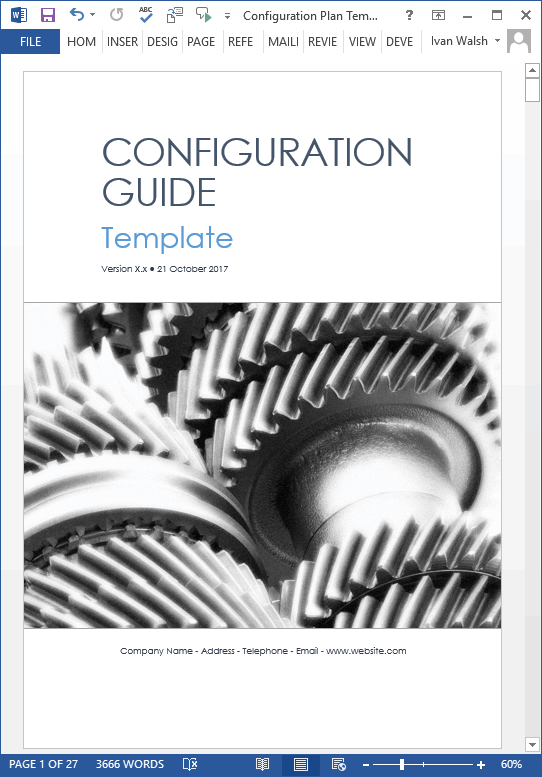- If you're using Microsoft Teams, you can organize your tasks by adding one or more Planner tabs to a team channel. You can then work on your plan from within Teams or in Planner for web, remove or delete your plan, and get notified in Teams when a task is assigned to you in Planner.
- Get the Planner apps for iOS and Android. Capture tasks, update progress, continue conversations and more with the Planner mobile app on iPhone, iPad, and Android. Announcing a Planner AMA. Join us on Tuesday, November 17, 2020 from 9:00 a.m. PT in the Planner AMA space. Add the event to your calendar.
Mar 14, 2020 Microsoft Planner is a to-do app that comes with Office 365. It’s used for personal and teamwork planning, with a simple card-based interface that’s similar to Trello. Here’s a quick look at how to use it. On Microsoft 365 home page, select the app launcher at the top of the browser window. Select the Planner tile in the app launcher, or on the home page. Note: If you don't see the Planner option, you may need to select All Apps or Explore all your apps to find. Office for business Microsoft Planner Sign in to Planner, and you'll see a plan for each of your Microsoft 365 Groups.
-->A lot of actionable information about changes to Microsoft 365 services arrives in the Microsoft 365 message center. It can be hard to keep track of which changes require tasks to be done, when, and by whom, and to track each task to completion. You also might want to make a note of something and tag it to check on later. You can do these things and more when you sync your messages from the Microsoft 365 admin center to Microsoft Planner. This article describes how.
- How you can use Planner to track your message center tasks
How you can use Planner to track your message center tasks
Message center posts will sync to one plan in Planner, and into one bucket of that plan. You can customize this plan however you like; before you turn on Planner syncing, you might want to figure out how you'll be using Planner so you will know which messages you want to sync, and how. If you’re unfamiliar with Planner, watch Organize your team’s tasks in Planner, see the Planner Quick Start, or browse Planner help.
Based on what we've heard from customers, here are some suggestions about how to organize your plan:
- Sort by service
- Sort by workflow
Organize your plan by service
How To Use Ms Planner
If you often assign and track message center tasks by the service or app they’re related to, you might want to organize your plan by service. In this design, you’d create a bucket called “Message Center Posts” for messages to sync into and become tasks. You’ll also create a bucket for each service. For example, the buckets could be named 'Exchange Online', 'SharePoint and OneDrive', 'Teams', and 'General'. You and other members of the plan can move tasks from Message Center Posts to the relevant column, and then assign them, give them due dates, add checklists, add attachments, and otherwise track their progress.
Organize your plan by workflow
If you often track message center tasks by what needs to be done in a sequence, you might want to organize your plan by workflow. In this design, you’d create a bucket called “Untriaged” for messages to sync into and become tasks. You’d also create a bucket for each step in the workflow, such as 'Reviewed', 'Rolling Out', 'In Production', and 'Communication'. You and other members of the plan can meet periodically to triage and assign tasks, and to set task status.

Check your status using Charts
As you build your plan, you can always see a visual report of status using Charts view in Planner. It shows assignments, priority, and progress, letting you know at a glance how you’re doing.
Turn on Planner syncing
Go to the admin center.
Go to Show all > Health > Message center. Then, right above your messages list, select Planner syncing.
In the Planner syncing pane, select Set up syncing.
Under Select your plan, select either:
Search for a plan, then enter a name or select a plan from the list.
Or create a new plan in Planner, a link that opens Planner. There you can create a new plan, and then return to the message center and search for that plan.
Note
You can only sync your message center with one Planner plan.
Under Select a bucket, either create a new bucket or select an existing one, and then select Next.
Retrieve google contacts on iphone. Buckets are column-like categories in Planner. After you’ve turned on Planner syncing, each message becomes a task in the bucket you select here.
Note
- You can only select one bucket to sync to, but you can turn Planner syncing off and on again to change which bucket you’re syncing to.
- You can easily change the bucket name at any time in Planner.
Under Choose which messages to sync:
- Select either All updates or Only major updates. For each, you can still exclude updates from specific categories, products, and services using check boxes on this page.
- Decide which categories, products, and services you want to sync by selecting or clearing check boxes in the Include messages in these categories and Include messages about these products or services lists.
- Select Next.
Under Choose which current messages to import, you can decide whether you want to import messages from your current message center. You can select Don't import current messages or or an option to import from the past 7, 14, 21, or 28 days.
Important
After you start syncing to Planner, you can’t import messages again unless you turn off Planner syncing, then turn it on again, and go through setup another time.
On the Review and finish page, make sure the information is correct, and then select Finish.
On the Planner syncing is all set up page:
If you want to sync to Planner on a schedule, do the following:
Under Set up automatic syncing, choose the sync start date and time, and how often you want to sync (for example, every day or every 2 weeks).
Select Create flow with Power Automate.
Under Create a flow, select Continue, choose the plus sign (+) to sign in if necessary, and then select Create flow.
If you want to sync manually, there's no setup needed. Whenever you want to sync the latest posts, go to the message center and, at the top of the page, select Sync now.
To get started organizing, assigning, and taking notes, select the View your plan in Planner link.
If you want to turn off Planner syncing, go to the message center and select Planner syncing, and then Stop syncing.
In case you are not familiar or using Planner at the moment, I highly encourage you to get to learn and use the tool. As a project manager in my past career, I used MS Project extensively. But MS Project is a serious tool, built for project managers and large, lengthy projects. Planner, on the other hand, provides a light-weight alternative for regular team members. It is simple, fun to use, and very useful. With this post, I would like to give a bit more insight into the Planner and explain its main components.
What is Planner?
Planner is a light-weight task management tool that allows project managers and team members to build and maintain task plans for various projects. At one point, I provided a brief overview of the tool in this post.
How does Planner compare to MS Project?
It is like apples and oranges. Here are key attributes of Planner in comparison to MS Project.
- It is 100% web-based
- It is less formal – it does not have an ability to set dependencies, manage resources, etc. like MS Project
- It is social – unlike MS Project which is usually maintained by the project manager, Planner is built for the teams – any team member can create/edit tasks and comment on them
Planner is part of Office 365 Groups
What makes Planner unique, compared to other tools out there, is that being part of an Office 365 eco-system it is also part of an Office 365 Group. It is not just a task management list that floats in space. It is part of the Office 365 Group membership group, which means that it is members of the security group enjoy equal access to Planner, Outlook, SharePoint Site, and Teams.
How to create new plans in Planner
There are two ways to create a Plan in Planner, and I documented them all in this post.
What are Planner’s major features?
OK, so now that we got the intro out of the way, let’s review the major features that make this tool unique and powerful!
Tasks

Well, this is self-explanatory, I hope. The task panel in Planner allows you to enter typical attributes of a task like a task name, due dates, assigned to, description, status, priority.
Buckets

As you create your tasks, you can organize them into buckets (board categories). A bucket could be anything – phase of the project, a sprint in a Scrum project, category, etc. – however you want to organize your tasks in a project.
Planner Hub
The Planner Hub allows you to have a 10,000-foot view over your projects. It is very high-level, do not expect detailed reporting here, but still quite useful.
Comments
This is a feature I like most. The ability to provide comments on a task. With MS Project and even with a SharePoint Task List, this was somewhat hidden and not obvious. With Planner – it is front and center and allows users to see the comments and activity on a given task in chronological order. Powerful stuff!
Checklist
Another cool feature. Sometimes a task, no matter how small it is, requires a few subtasks to be completed first. Instead of creating separate tasks in Plans, you can create subtasks (called Checklist) within a task panel. By the way, if you are looking for alternate ways to maintain checklists in Office 365, please reference this post.
My Tasks View
As you participate in various Office 365 Groups and have multiple plans with tasks, it is always useful to see all the tasks from all plans in a single view.
Integration with To Do
This is a feature of Microsoft To Do, that I blogged about previously. Planner now integrates with a personal Task Management tool and allows a user to see personal as well as team-related tasks all in one place!
A screenshot of To Do showing Planner Tasks
Integration with Outlook Calendar
Thanks to the recent improvement, we can now integrate Plan with Outlook.
Once you set it up using the steps above, team tasks will now appear in a calendar format in Outlook.
Integration with SharePoint
You can also embed your plan or plan’s charts into your SharePoint page using the Planner web part
Ms Planner 365
Mobile App
Ms Planner Tutorial
Lastly, there is a Mobile App available for you to access and complete tasks on the go!

